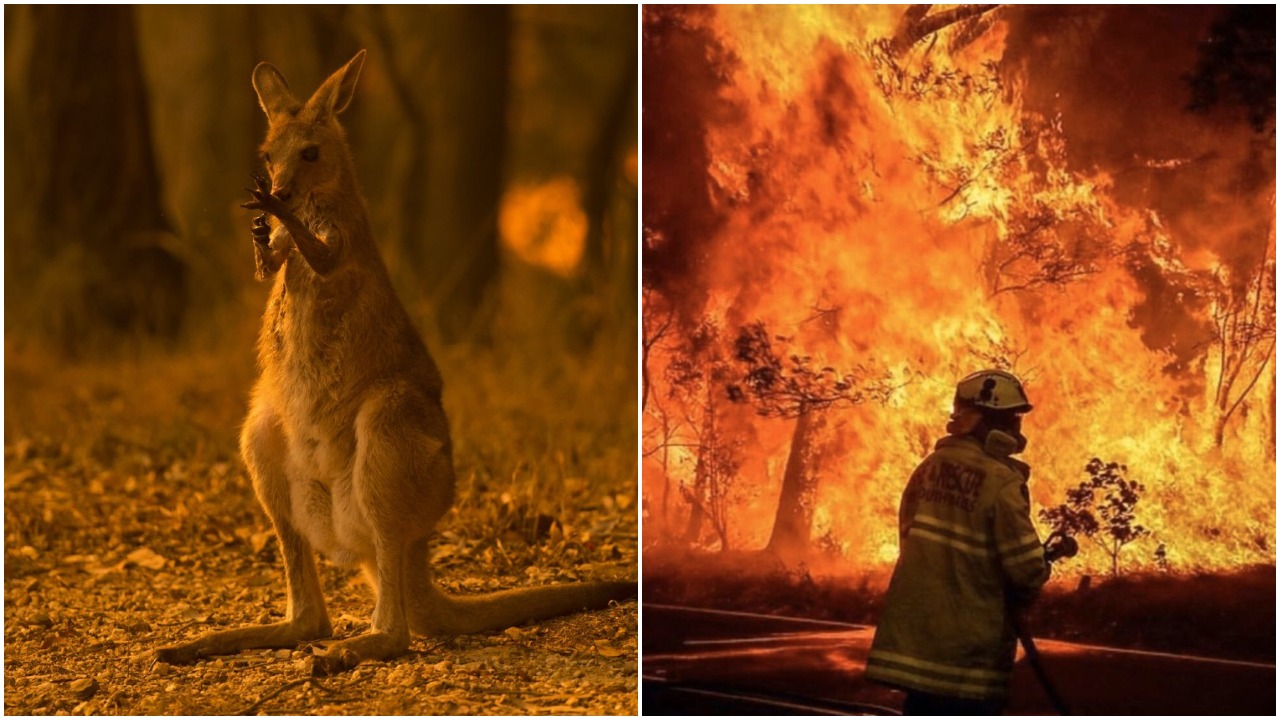Animals
Australia fires impacted 3 BILLION animals in “one of the worst wildlife disasters in modern history”
Nearly three billion animals were killed or displaced by Australia’s devastating bushfires of 2019-2020, according to a new study.

(TMU) – Scientists have revealed that nearly three billion animals were killed or displaced in Australia’s unprecedented wave of bushfires in 2019 and 2020, which experts have dubbed “one of the worst wildlife disasters in modern history.”
While it still remains difficult to gauge the true extent to which wildlife in the country has been devastated, the new report titled “Australia’s 2019-2020 Bushfires: The Wildlife Toll,” suggests that the fires led to almost triple the losses estimated in January, when experts said that a billion animals were killed in the blazes.
According to the report based on research from several universities and commissioned by the World Wide Fund for Nature (WWF), some 143 million mammals, 180 million birds, 51 million frogs, and a staggering 2.46 billion reptiles were impacted by the crisis.
⚠️3 billion animals estimated to be impacted by the Australian bushfires. We have an opportunity to raise our voices for what we’ve lost and turn things around for struggling wildlife. Your voice is powerful, sign here ?https://t.co/sTcKcaVKaT pic.twitter.com/mfBsFzpgZS
— WWF_Australia (@WWF_Australia) July 28, 2020
While not all of the creatures were killed by flames or heat, scientists say that their ability to survive in the aftermath of the catastrophe is “probably not that great” due to the dehydration, starvation, and predation of feral animals such as cats that followed.
Conservationists and environmentalists have expressed dismay at the grim numbers from the study.
“The interim findings are shocking. It’s hard to think of another event anywhere in the world in living memory that has killed or displaced that many animals,” said WWF-Australia CEO Dermot O’Gorman.
“This ranks as one of the worst wildlife disasters in modern history,” he added.
Experts had warned in January that the massive loss of life due to the fires threatened to cross a tipping-point for entire species of animals and plants on an island continent where 87 percent of wildlife is endemic to the country, meaning it can only be found on Australia. This includes such critically endangered species as the southern corroboree frog and mountain pygmy-possum, whose habitats were ravaged by the fires.
https://twitter.com/AJEnglish/status/1288094390129496065
Kangaroos, koalas, wallabies, wombats, potoroos, bandicoots, echidnas, and other species also saw their habitats devastated by the fires, with the inferno extending to wetlands, dry eucalyptus forests, and even rainforests, the leaving creatures little space to find refuge.
According to a government report released earlier this year, some 100 native plant and animal species saw half of their habitat lost to the blazes, raising fears of unprecedented and horrific losses.
Chris Dickman, an ecology professor at the University of Sydney and Australian Academy of Science fellow who oversaw the project, had estimated in January that the losses were likely to exceed one billion.
Following the release of the study this week, Dickman told The Guardian that the revised number approaching three billion came as a brutal shock to the researchers.
“Three thousand million native vertebrates is just huge. It’s a number so big that you can’t comprehend it,” Dickman said. “It’s almost half the human population of the planet.”
Dickman added that while much of the attention had been focused on the devastating loss of koalas, the fire’s impact was more far-reaching and had wrought horrific losses on smaller species such as skinks, a reptile that can live in densities exceeding 1,500 per hectare (10,000 square meters).
The report details how with over 15,000 blazes across Australia’s states, the fire season ranked as the worst ever recorded. According to the report, the fires had an impact on over 11.46 million hectares (28.32 million acres).
https://twitter.com/bbcworldservice/status/1288135303883116549
Arnulf Köhncke, species protection expert at WWF Germany, told DW that the disastrous wave of bushfires could be a sign of things to come.
“The record fires in Australia could become the new normal, just a taste of what’s to come, if we don’t manage to limit the global temperature rise to below 1.5 degrees Celsius (2.7 Fahrenheit),” Köhncke said.
O’Gorman noted that with extreme fires fast becoming the norm, the Australian study can “give other countries a window into the future of mega fires and their devastating impact on wildlife” and hopefully compel changes on a policy level.
Scientists have warned that climate change is lengthening summers in Australia and making them more dangerous, while shortened winters are making it harder to do bushfire prevention work.
Authors also called for an end to land clearance that depletes biodiversity and allows for the growth of megafires, habitat connectivity that can allow animals escape routes in case of large fires, and rapid response wildlife teams that can help mitigate the impact on threatened species.
According to WWF, a final report should be completed by the end of August.
Typos, corrections and/or news tips? Email us at Contact@TheMindUnleashed.com
